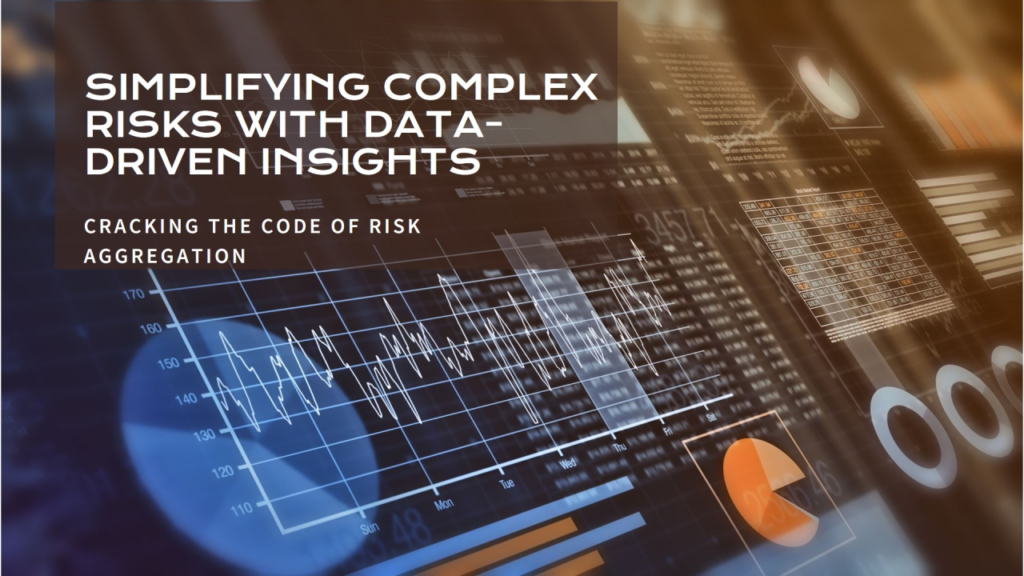Have you ever found yourself staring at multiple risk assessments, all reporting different ratings for the same risk, and wondering how on earth you’ll explain this to the Board? You’re not alone. Risk aggregation is one of the trickiest parts of risk management. After all, you don’t want to oversimplify and miss critical information, but you also don’t want to overwhelm the Board with too much detail. So, what’s the best way to go about it?
Yesterday, I was asked this very question by a potential client in the aviation leasing industry. They were struggling to aggregate risk ratings across different departments. Five departments had flagged data breach as a key risk. Four of them had rated it as AMBER (medium risk), and one department had rated it as RED (high risk). Their question was: “How do we present a unified risk profile to the Board?” Should the overall rating be AMBER? Should it be RED? Or somewhere in between?
Before you start tearing your hair out, let’s look at four effective methods you can use to tackle this challenge.
1. The Highest Risk Rating Approach: When Simplicity is Key
This one’s pretty straightforward: you take the highest risk rating among all departments and present it as your final, consolidated risk. So, in our case, you’d present the risk as RED because that’s the most severe rating reported by one department.
Why it Works: It’s simple and makes sure that the Board’s attention is on the worst-case scenario, ensuring they don’t overlook a serious risk. Think of it as waving a red flag—literally—so the Board knows exactly where to focus.
Why it Might Not: Sometimes, it can make the overall risk look more severe than it actually is, especially if the higher rating is due to an isolated issue in one department.
When to Use It: If the risk has the potential to cascade across the organization or significantly impact business operations, it’s better to err on the side of caution.
2. The Weighted Average Approach: When You Need a Balanced View
This method is a bit more nuanced. You assign weights to each department’s risk rating based on factors like department size, data sensitivity, or how crucial their function is. Then, you calculate an average score. If the RED-rated department is smaller and less critical, it could have a lower weight, making the overall rating closer to AMBER.
Why it Works: It gives you a more balanced, quantitative view and ensures that extreme ratings don’t skew the overall picture.
Why it Might Not: It’s more complex to implement and can end up underestimating significant risks if not done carefully.
When to Use It: When different departments have varying levels of exposure to the risk and you want a more granular picture of the organization’s risk profile.
3. Scenario-Based Aggregation: When You Want to See the Bigger Picture
Scenario-based aggregation is all about “what ifs.” You simulate different scenarios to see how the risk could impact the organization. For instance, the RED rating might indicate a potential domino effect that could escalate the AMBER ratings in other departments. This method helps you understand the bigger picture and how risks might interact.
Why it Works: It’s a great way to capture potential cascading effects and interdependencies between departments.
Why it Might Not: It requires more data and analysis, which can be time-consuming.
When to Use It: If you’re dealing with risks that have strong interdependencies or could trigger a chain reaction, like supply chain disruptions or operational outages.
4. Monte Carlo Simulation: When You Need Precision and Insight
Now, this is where things get really interesting. Monte Carlo Simulation uses computational algorithms to model the probability of different outcomes based on a range of variables. It runs thousands of iterations to simulate potential scenarios, taking into account the likelihood of occurrence, impact severity, and even interdependencies between departments.
Application in the Data Breach Risk Scenario: For the data breach risk across five departments, Monte Carlo Simulation can quantify the combined risk exposure by modeling potential outcomes. It considers:
- Likelihood of Occurrence: Probability of a data breach happening in each department.
- Impact of the Breach: Potential financial, reputational, and operational impacts.
- Dependencies and Correlations: Models interdependencies to see if a breach in one department could increase the likelihood or impact in others.
Why it Works: It gives you a probability distribution of outcomes, so you’re not just presenting a single risk rating, but a range of possibilities and their likelihood. This way, the Board can see not just a single number, but understand the range and likelihood of potential outcomes.
Why it Might Not: You need strong data and analytical capabilities, and it can be computationally intensive depending on the complexity of the model.
When to Use It: If you’re dealing with a complex risk profile with high variability and uncertainty, like financial risks or cyber risks, Monte Carlo is your best friend.
Our Best Recommendation: Combine Monte Carlo Simulation with the Highest Risk Rating Approach
Here’s the sweet spot: use the Highest Risk Rating Approach for simplicity and clarity, but back it up with Monte Carlo Simulation for deeper insights. Why? Because the Highest Risk Rating Approach ensures the Board doesn’t miss a potential red flag, while Monte Carlo Simulation shows them the full range of potential scenarios and their likelihood. It’s like giving the Board a clear signal to focus on the worst-case scenario, while also providing them with the detailed analysis to understand why and how likely it is to happen.
How This Combined Approach Benefits the Board:
For the Board, this approach provides:
- Clarity: The Highest Risk Rating gives them a clear indication of the most critical risk.
- Data-Driven Insight: Monte Carlo Simulation shows the probability distribution of outcomes, making it easier for the Board to grasp the range of potential impacts.
- Strategic Decision-Making: The Board can use these insights to prioritize risk mitigation efforts, allocate resources effectively, and monitor high-priority risks more closely.
Wrapping It Up:
Risk aggregation doesn’t have to be overwhelming. Whether you choose the straightforward Highest Risk Rating Approach, go for the nuanced Weighted Average Approach, explore “what ifs” with Scenario-Based Aggregation, or dive deep with Monte Carlo Simulation, the key is to align your approach with your organization’s risk appetite and strategic goals.
By combining the simplicity of the Highest Risk Rating with the robust insights from Monte Carlo, you’re giving your Board a comprehensive view that’s both actionable and data-driven. And when it comes to risk management, that’s exactly what you want—clarity backed by robust analysis.
How do you handle risk aggregation in your organization? Share your thoughts and let’s discuss how we can turn complex risk profiles into strategic insights!


